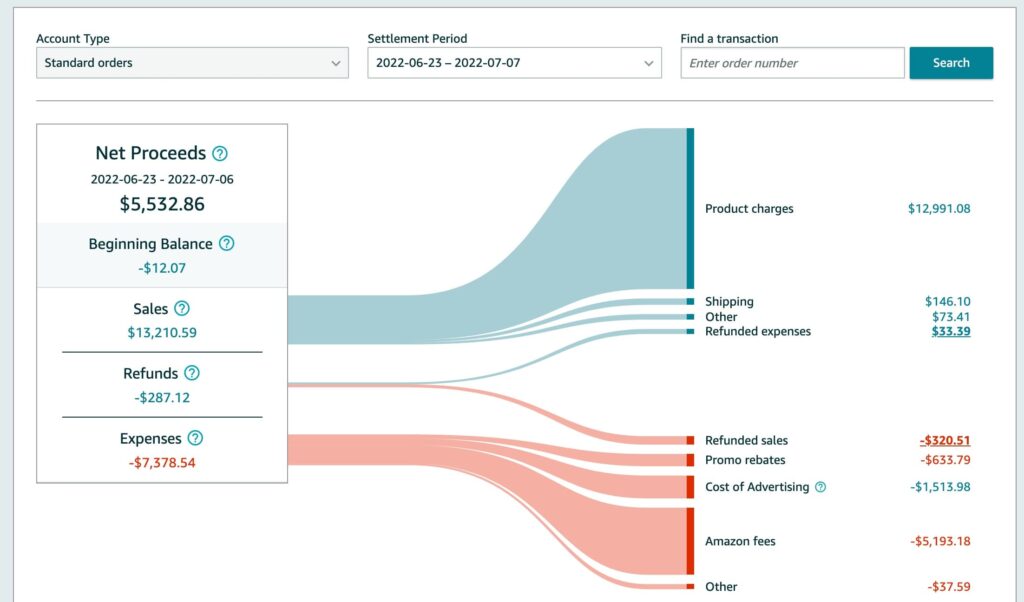Deciphering Amazon’s Sales Reports and Analytics: A Comprehensive Guide to Interpretation and Action

In the bustling marketplace of e-commerce, data is the fuel that drives informed decision-making and business growth. For sellers on Amazon, understanding and leveraging sales reports and analytics are paramount for maximizing profitability, identifying opportunities, and optimizing performance. Amazon provides a wealth of data and insights through its robust reporting and analytics tools, offering sellers valuable information about their sales performance, customer behavior, and market trends. In this extensive guide, we’ll explore the intricacies of interpreting and acting on Amazon’s sales reports and analytics, providing detailed explanations, practical strategies, and valuable insights to help sellers harness the power of data and drive success on the world’s largest online marketplace.
Understanding Amazon’s Sales Reports and Analytics
Before diving into interpretation and action strategies, it’s crucial to understand the scope and significance of Amazon’s sales reports and analytics:
- Comprehensive Data: Amazon’s reporting and analytics tools provide sellers with a wealth of data about their sales performance, including metrics such as total sales, units sold, revenue, conversion rates, and more.
- Granular Insights: Sellers can access granular insights into customer behavior, including purchase patterns, product preferences, geographic distribution, and more, enabling them to make data-driven decisions to optimize their sales strategies.
- Actionable Intelligence: Amazon’s sales reports and analytics offer actionable intelligence that sellers can use to identify trends, opportunities, and areas for improvement, enabling them to refine their sales tactics and drive growth.
Key Components of Amazon’s Sales Reports and Analytics
Amazon’s sales reports and analytics encompass a range of key components, including:
- Sales Performance Metrics: Metrics such as total sales, units sold, revenue, and average order value provide an overview of overall sales performance and revenue generation.
- Product Performance: Detailed insights into product performance, including sales volume, conversion rates, and customer reviews, help sellers identify top-performing products and optimize product listings.
- Customer Behavior: Information about customer behavior, including purchase history, browsing patterns, and demographic data, allows sellers to understand their target audience better and tailor their marketing strategies accordingly.
- Inventory Management: Data on inventory levels, stockouts, and replenishment cycles enable sellers to manage their inventory effectively and prevent stockouts or overstock situations.
Strategies for Interpreting and Acting on Amazon’s Sales Reports and Analytics
To make the most of Amazon’s sales reports and analytics, consider implementing the following strategies:
- Regular Review: Set aside time regularly to review your sales reports and analytics, ideally on a weekly or monthly basis, to stay informed about your sales performance and identify any emerging trends or issues.
- Identify Top Performers: Identify your top-performing products, categories, and market segments based on sales volume, revenue, and other performance metrics, and allocate resources accordingly to maximize growth opportunities.
- Optimize Product Listings: Use insights from your sales reports and analytics to optimize your product listings, including titles, descriptions, images, and keywords, to improve visibility and conversion rates.
- Adjust Pricing Strategies: Analyze pricing trends and competitive landscape data to adjust your pricing strategies as needed, ensuring that your prices remain competitive while maximizing profitability.
- Segment Customers: Segment your customers based on purchase history, behavior, and demographics to tailor your marketing efforts and promotions to specific audience segments, increasing relevance and effectiveness.
- Monitor Competitors: Keep an eye on competitor activity and performance metrics to identify new opportunities, benchmark your performance, and stay ahead of the competition.
- Experiment and Iterate: Continuously experiment with different sales tactics, marketing strategies, and product offerings based on insights from your sales reports and analytics, and iterate based on results to optimize performance over time.
Conclusion
Interpreting and acting on Amazon’s sales reports and analytics is essential for maximizing sales, optimizing performance, and driving growth on the platform. By understanding the key components of Amazon’s sales reports and analytics, implementing strategies for interpretation and action, and continuously monitoring performance and making data-driven decisions, sellers can unlock new opportunities for success on the world’s largest online marketplace. So don’t miss out on the opportunity to harness the power of data and analytics to drive your Amazon business forward. Start interpreting and acting on your sales reports and analytics today and take your e-commerce business to new heights of success.




